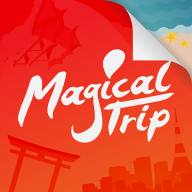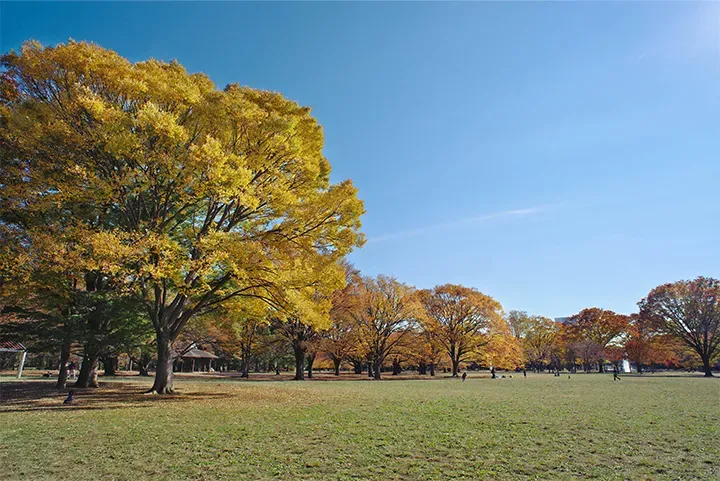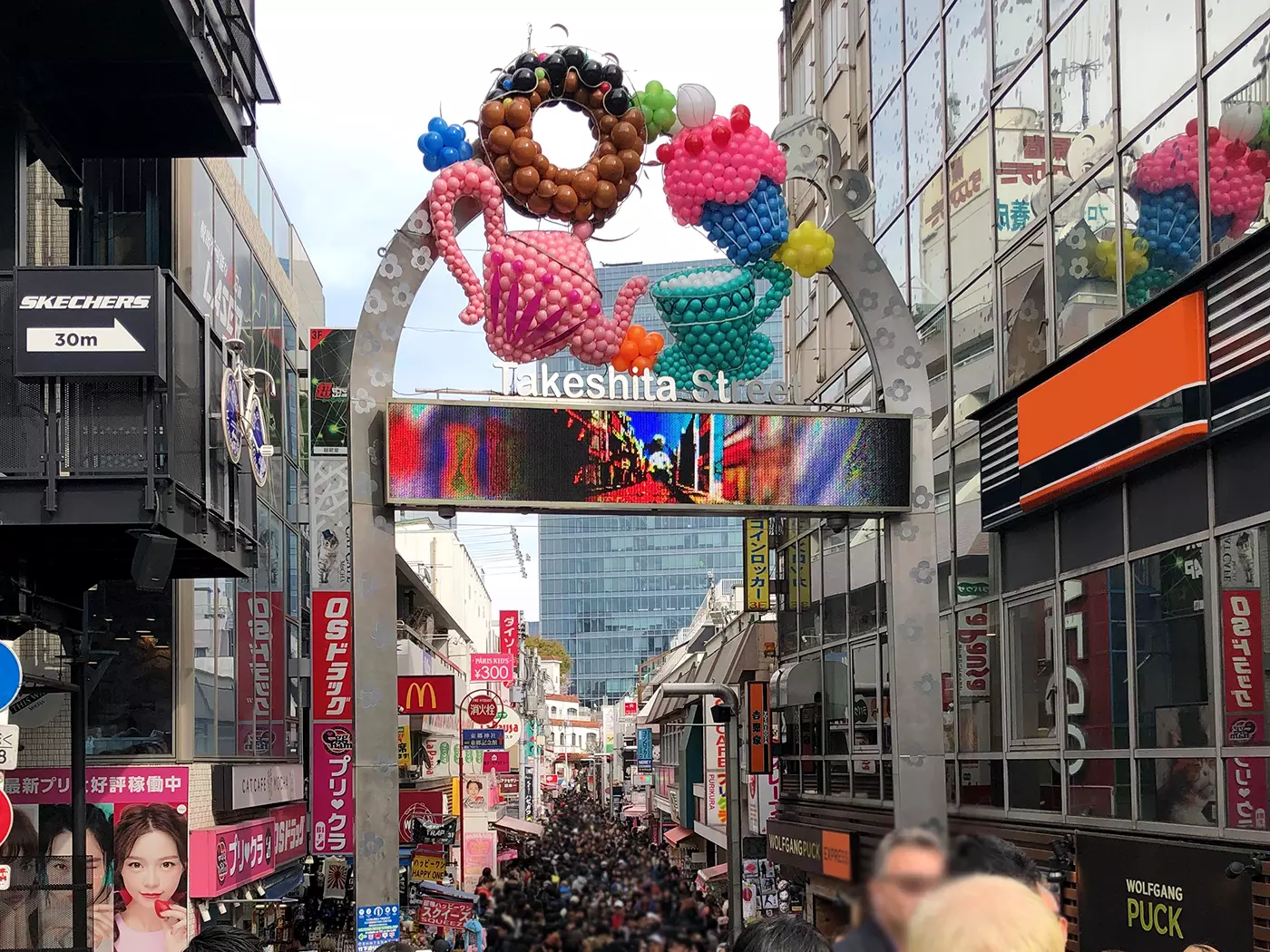Yoyogi Park, beloved by people as an urban oasis, is located in Shibuya Ward, Tokyo.
Shibuya is known for its large commercial facilities and fashion buildings, making it one of the busiest downtown areas in Tokyo. The sight of the "Scramble Crossing," where over 1,000 people cross at once, is widely recognized as a symbol of the metropolis of Tokyo. Bustling with people throughout the day and night, Shibuya is called the "city that never sleeps." Recent large-scale redevelopment has further modernized the area, continuing its evolution as an advanced and urban city.
Despite being in Shibuya, Yoyogi Park offers a wealth of nature. Combined with the adjacent Meiji Jingu shrine, it boasts an extensive area equivalent to 27 Tokyo Domes, mostly covered by lush forests that showcase seasonal changes.
In this article, we'll introduce Yoyogi Park, which has become a precious relaxation spot for people.
If you are interested in explore Tokyo's trendy culture, check the article below! I summarize how and where you can enjoy them as much as possible.
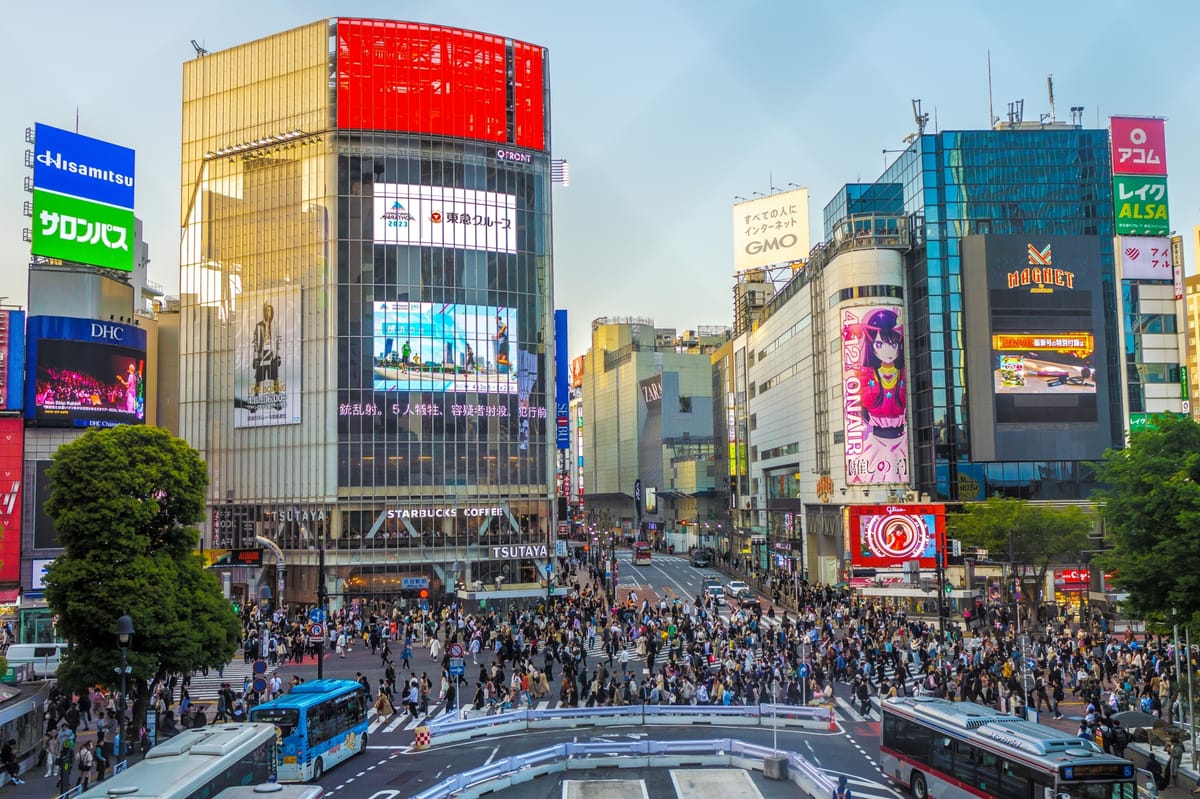
If you are interested in Harajuku's pop culture, check the article below! I summarized how and where you can enjoy them as much as possible.
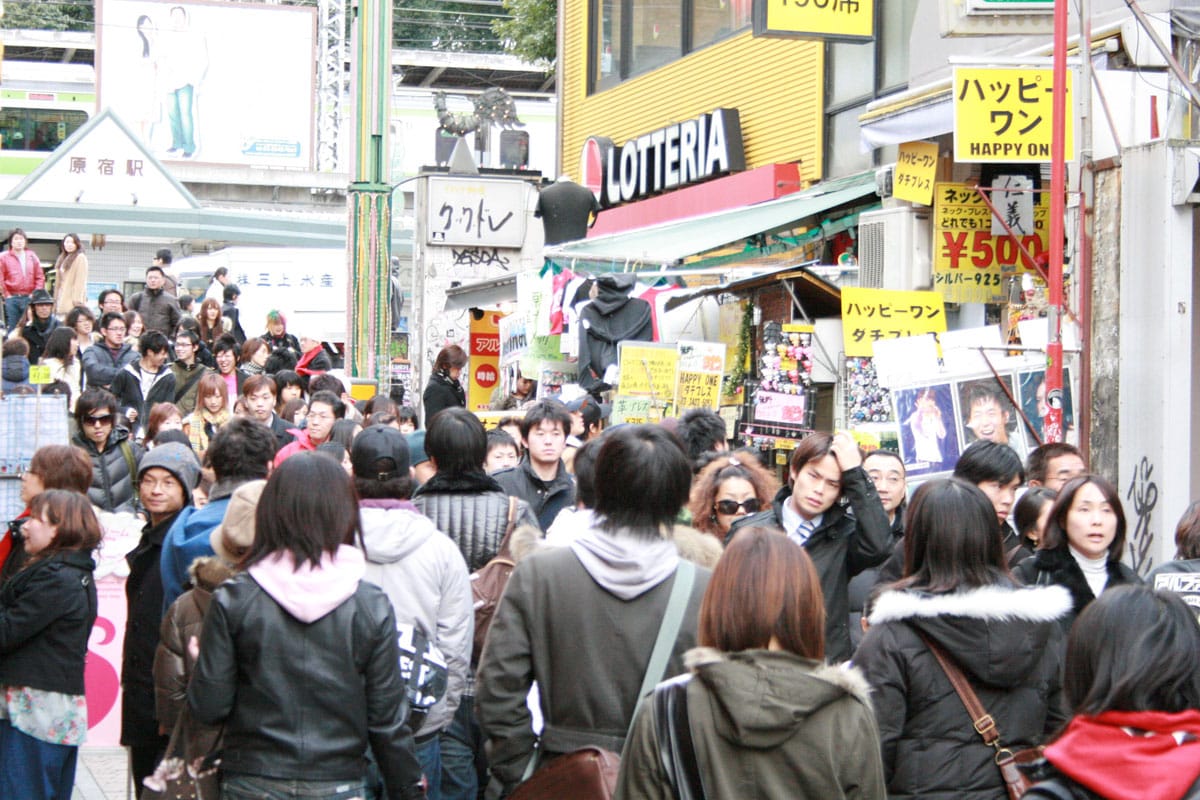
What is Yoyogi Park?
source:Official website
Yoyogi Park is a metropolitan park located in the heart of Tokyo's Shibuya Ward, boasting a vast area of about 54 hectares, equivalent to 11 Tokyo Domes. With the concept of being "the park with the widest sky view in the city center," Yoyogi Park serves as an urban oasis where people can enjoy rich nature and find respite.
The park is divided into Area A on the north side and Area B on the south side, separated by a road.
Area A features a lush forest park with four squares, including the "Central Square," as well as a cycling course and a dog run. It's also famous for its flowers and autumn foliage.
Area B includes an athletic field, ball game fields for soccer and rugby, basketball courts, and is popular among sports enthusiasts. Various festivals are frequently held at the outdoor stage and event plaza.
Yoyogi Park offers diverse ways to enjoy it and is bustling with visitors throughout the year. Let's explore how to enjoy Yoyogi Park based on different purposes.
Ways to Enjoy Yoyogi Park
Picnic at the Hill Square
In Yoyogi Park, people are allowed to eat and drink on the grass while sitting on leisure sheets. As a result, many people enjoy picnics, making it a popular relaxation spot.
The surrounding areas of Shibuya and Harajuku offer plenty of takeout options, which is very convenient.
You can have a picnic on the grass at the open "Central Square," or at the "Olive Square," "Panorama Square," and "Rose Square," which are close to the Harajuku Gate.
My personal recommendation is the "Hill Square." It's a comfortably secluded area with a small grassy hill surrounded by trees, offering plenty of shade and a relaxing atmosphere. It's less crowded compared to other squares, making it ideal for a leisurely picnic. This area is also popular for cherry blossom viewing in spring and hydrangea viewing in June.
Enjoying Flowers
source:Official website
Yoyogi Park offers a variety of flowers to enjoy throughout the seasons. Among them, cherry blossoms are particularly famous.
In spring, about 700 cherry trees bloom spectacularly, making Yoyogi Park one of Tokyo's most popular cherry blossom viewing spots. The recommended areas for cherry blossom viewing are the "Central Square," "Hill Square," and "Cherry Blossom Garden."
The park is also famous as a spot to enjoy roses. There are rose gardens in the "Rose Square" and "Flower Land," where about 68 varieties and 700 rose plants bloom beautifully during the blooming seasons in spring and autumn. You can also enjoy mimosa and dogwood in spring, hydrangea and sunflowers in summer, and daffodils and plum blossoms in winter.
The best times to see flowers may vary depending on the climate of the year. The official X (Twitter) account of Yoyogi Park frequently updates information on the best viewing times, so it's a good idea to check it before visiting.
Rental Cycling to Fully Enjoy Nature
In Area A of Yoyogi Park, there's a circular cycling course (about 1.8 km long), and you can rent bicycles at the cycling center.
Available bicycles include adult bikes (210 yen per hour), children's bikes (100 yen per hour), and even tandem bikes for two people (210 yen per lap).
The cycling course is located on the north side of the "Central Square." It's easy to ride with gentle ups and downs, and it feels great to ride through the forest. You can fully enjoy the rich nature that's hard to believe exists in the center of Tokyo, in Shibuya Ward, which refreshes your mood.
Near the cycling course, there's a café called "Parks Yoyogi no Oka," which is recommended for taking a break or having a light meal.
Vibrant Festivals
Various festivals are held in Yoyogi Park throughout the year. For example, "Earth Day Tokyo," held every spring, calls for actions considering the planet, such as eco-friendly and sustainable practices.
International exchange events themed on various countries allow you to experience different cultures through music, dance, cuisine, and workshops. Last year, I participated in the "Taiwan Festa," where I enjoyed lively Taiwanese food stalls and beautiful lanterns in the middle of Tokyo.
Other events include the "Wan Wan Carnival" where you can enjoy time with your dogs, and "Earthquake Recovery Events" tailored to specific times of the year.
The main venues are the outdoor stage, event plaza, and Zelkova Avenue in Area B, which are always bustling with many people. Events are held almost every weekend, so be sure to check them out.
Best Seasons to Visit Yoyogi Park
Yoyogi Park offers different scenery in each season. While every season has its charm, the most popular times are the cherry blossom season in spring and the autumn foliage season.
Every year, the cherry blossom season attracts many visitors. As mentioned earlier, about 700 cherry trees bloom, painting the park pink. One attractive point is that due to the variety of cherry tree species, the full bloom periods are staggered, allowing visitors to enjoy cherry blossom viewing for an extended period.
In autumn, you can enjoy colorful fall foliage. Particularly beautiful are the ginkgo trees that turn a vibrant yellow, the 300-meter-long golden zelkova avenue, and the bright red maples around the fountain pond, creating stunning contrasts with various natural colors. When the leaves start to fall, the "autumn leaf carpet" covering the ground is also a sight to behold.
Personally, I also like the Christmas season when the zelkova avenue is illuminated with fantastical blue lights, and I enjoy the fresh greenery of summer. Yoyogi Park is charming in different ways in each season, ensuring satisfaction no matter when you visit.
Access to Yoyogi Park
Location: Yoyogi Jingan-cho, Jinnan 1-chome, Jinnan 2-chome, Shibuya-ku
3 minutes walk from JR "Harajuku" station
3 minutes walk from Tokyo Metro Chiyoda Line "Yoyogi-koen" (C02) station
3 minutes walk from Tokyo Metro Chiyoda Line/Fukutoshin Line "Meiji-jingumae (Harajuku)" (C03, F15) station
6 minutes walk from Odakyu Line "Yoyogi-hachiman" station
Parking available (paid)
Basic Information about Yoyogi Park
Open 24 hours
Free admission (some facilities require a fee)
Nearby Tourist Spots
Meiji Jingu Shrine
source:TripAdvisor
Adjacent to Yoyogi Park, Meiji Jingu Shrine is located in Shibuya Ward but boasts an extensive area equivalent to 15 Tokyo Domes, blessed with rich greenery that's hard to imagine in the city center. The approach to the shrine, surrounded by dense forest, exudes a mystical atmosphere that's soothing just to walk through.
Meiji Jingu enshrines Emperor Meiji and Empress Shoken, who were known for their close relationship. It's said to bring benefits for praying for good relationships and marital harmony. It's also famous for recording the highest number of New Year's visitors in Japan every year.
Known as one of Japan's premier power spots, it attracts many visitors throughout the year. The approach to the shrine is paved with small round stones, so it's recommended to visit wearing comfortable shoes.
Takeshita Street
source:Official website
Takeshita Street is a shopping street about 350 meters long, right in front of JR Harajuku Station. It's home to about 130 shops selling trendy fashion items, accessories, sweets, and photo booths popular among young people.
From 11 AM to 6 PM daily, it becomes a pedestrian paradise closed to vehicles, bustling with many people, especially young ones.
It has been the birthplace of various trends over time and is now known as the source of the "kawaii" (cute) culture that symbolizes Harajuku culture. Many international stars have also visited this street.
The colorful and cute items typical of Harajuku are fun just to look at, and you can enjoy a unique atmosphere not found in other areas. It's a spot where you can enjoy not only shopping but also just walking around. Taking a purikura (photo booth) picture as a memento of your visit to Harajuku is also recommended.
Conclusion
We've introduced Yoyogi Park, which many people enjoy as an urban oasis, along with nearby tourist spots.
Although Yoyogi Park is in Shibuya, time seems to flow slowly, making you forget the urban bustle. During your trip to Japan, it's recommended to visit Yoyogi Park to experience the changing seasons, relax, enjoy cycling or have a picnic. Participating in lively festivals is also a good idea.
With good transportation access and proximity to famous tourist spots like Meiji Jingu Shrine and Takeshita Street, why not visit Yoyogi Park along with other attractions?
If you are interested in How to spend morning time in Shibuya, check the article below! I summarized how and where you can enjoy Shibuya Morning as much as possible.


